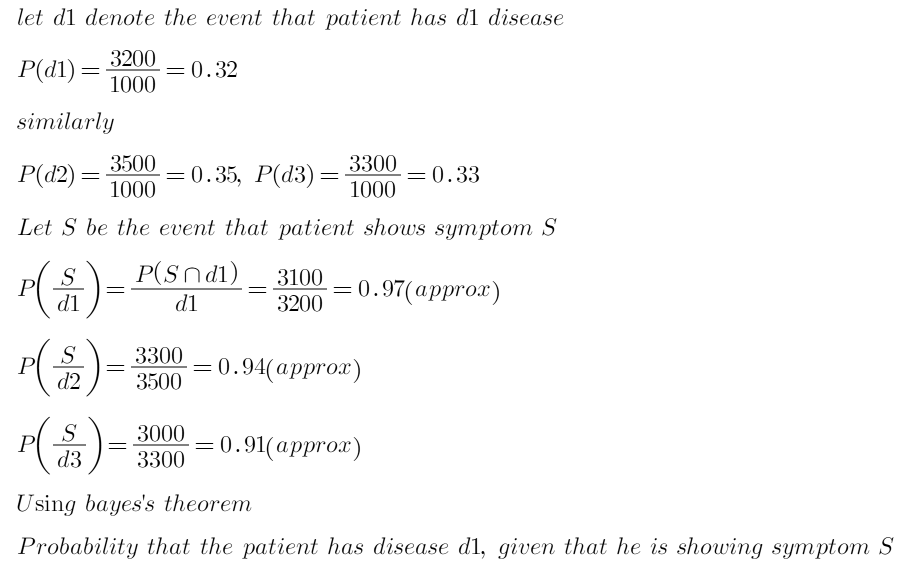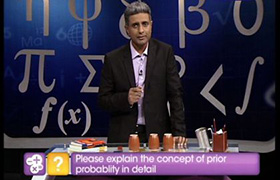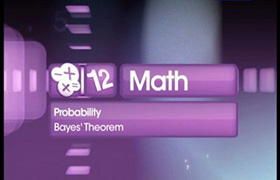CBSE Class 12-science Answered
Pl ans

Asked by jain.pradeep | 05 Dec, 2019, 00:26: AM
The question is incomplete to provide complete solution, the question should be
Let d1, d2, d3 be three mutually exclusive diseases. Let S = {S1, S2, .....S6} be the set of observable symptoms of these diseases. For example, S1 is the shortness of breath, S2 is the loss of weight, S3 is fatigue, etc. Suppose a random sample of 10000 patients contains 3200 patients with disease d1, 3500 with disease d2 and 3300 with disease d3. Also, 3100 patients with disease d1, 3300 with disease d2 and 3000 with disease d3 show the symptoms S. Knowing that the patient has symptoms S, the doctor wishes to determine the patient’s illness. On the basis of this information, what should the doctor conclude?


Answered by Arun | 06 Dec, 2019, 10:25: AM
Concept Videos
CBSE 12-science - Maths
Asked by janusingh736 | 13 Mar, 2024, 16:19: PM
CBSE 12-science - Maths
Asked by babitdevi283 | 14 Nov, 2023, 21:42: PM
CBSE 12-science - Maths
Asked by Topperlearning User | 19 Aug, 2016, 23:00: PM
CBSE 12-science - Maths
Asked by Topperlearning User | 04 Jun, 2014, 13:23: PM
CBSE 12-science - Maths
Asked by Topperlearning User | 04 Jun, 2014, 13:23: PM
CBSE 12-science - Maths
Asked by Topperlearning User | 04 Jun, 2014, 13:23: PM
CBSE 12-science - Maths
Asked by Topperlearning User | 04 Jun, 2014, 13:23: PM
CBSE 12-science - Maths
Asked by Topperlearning User | 19 Aug, 2016, 23:37: PM
CBSE 12-science - Maths
Asked by Topperlearning User | 04 Jun, 2014, 13:23: PM





